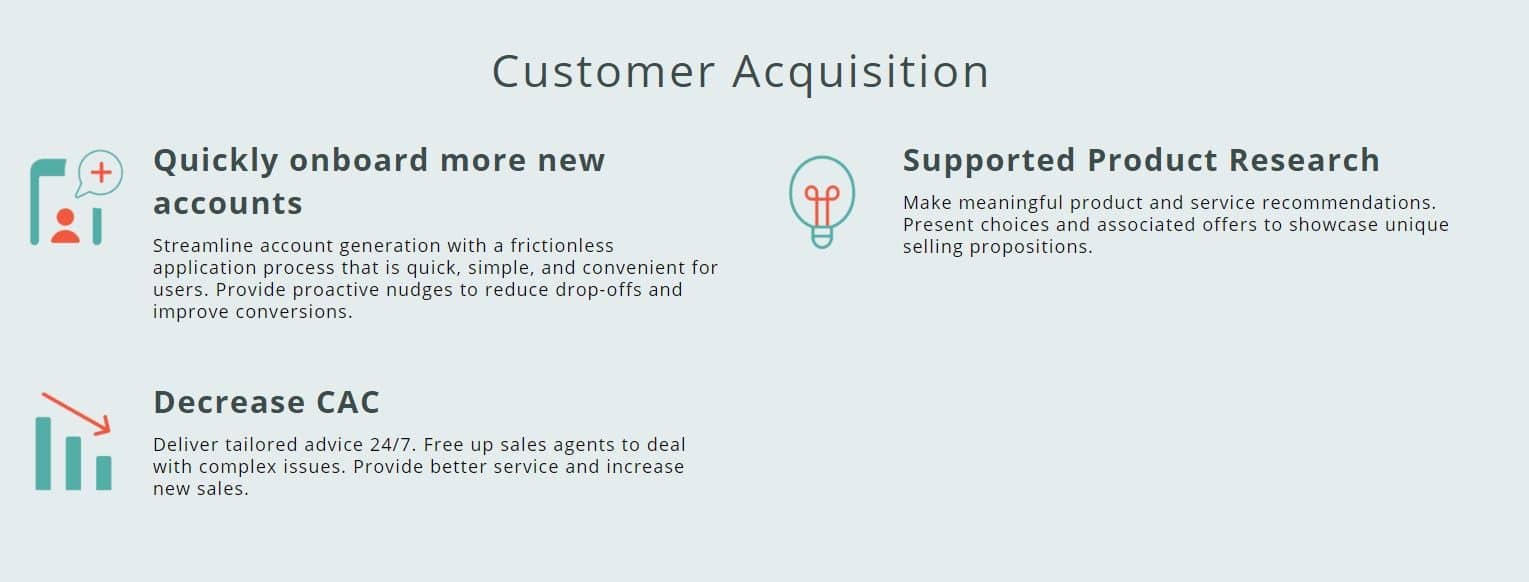The thoughts and opinions expressed by the author of this piece and the interviewee, Maruf Hossain, are entirely their own and do not reflect the opinions, views, or stances of the companies at which they work.
This is the first in our series on conversational interfaces and chatbots in banking, where we interview experts in the field about what’s possible with the technology in use-cases such as customer service, wealth management, and marketing.
In this article, we break down insights gleaned from our interview with Maruf Hossain, data science lead at one of Australia’s top four banks. Maruf has served in data science roles at a variety of companies over the last several years, including IBM, Infosys, and Credit Clear. He holds a PhD in Machine Learning for Bioinformatics from the University of Melbourne.
During our interview, we discussed:
- How Maruf defines conversational user interfaces, or CUI’s.
- Conversational interface use-cases in banking.
- The future of conversational user interfaces.
There is a lot of hype around chatbots, but we believe these discussion topics will serve leaders in banking well when it comes time for them to decide whether or not to adopt a chatbot at their bank. Our breakdown of Maruf’s insights begins with a definition of conversational user interfaces.
Definition: Conversational User Interface
Maruf defines Conversational User Interface (CUI) as an interaction method with a computer in a more human-like fashion. With advancements in natural language processing (NLP), the onus is now on the computers to understand human intent behind executing a task. This is a paradigm shift from the previous communications achieved either by typing in commands or tapping icons.
Maruf claims that this technology is not new. The first conversational UI, an Interactive Voice Response (IVR) system, was designed and developed by Steven Schimdt for an order entry inventory control system in 1973.
At that time, it didn’t feel like it was a conversation between a human and a computer; rather, it was more like uttering specific keywords to make things work. IVR became more popular and came to the mainstream in the 90’s with the advancement of multimedia technology.
The current hype, Maruf says, is due to the availability of AI technology, specifically natural language processing, which enables machines to statistically infer the actual intent hidden within streams of human language.
At present, Maruf explains that there are two forms of conversational UI: voice assistants that allows us to talk and chatbots that allow us to type.
Maruf continues, text-based chatbots date pre-AI. There was, and probably still is, rule-based bots available that were specifically designed for a certain scenario. When they meet an unknown situation, they respond with a fallback response, usually offering customers to chat with a human operator. Also, these bots respond through pre-set responses, often giving the user links as answers. Often this is what customers are looking for.
Maruf differentiates natural language processing from natural language understanding (NLU) by giving an example of an AI-driven text-based chatbot that uses natural language generation to frame its responses, which are more human-like and can sometimes use the same lingo as the customer (e.g. teenager-like word choices when “talking” to teenagers).
Voice assistants, Maruf says, on the other hand, use NLP from the beginning. That’s why voice assistants often sound better than IVR systems. Maruf predicts Siri, Alexa, Google or Cortana may bring 70s science-fiction to reality soon.
Use Cases and Applications in Banking
Maruf is under the opinion that the banking sector has huge opportunity to better connect with customers, businesses, and their own employees through conversational UI. Below are Maruf’s top six conversational interface use-cases and applications in banking:
1. Basic Customer Support
The User Interface (UI) takes the requested information from the customer straight from the source material and classifies the intent to fit the context of the conversation.
Maruf strongly believes customers love short answers to their basic enquiries. Providing answers through chatbots has a number of advantages:
- Eliminating the need for customers to call up the contact centre and wait in the queue.
- Helping the enterprise to better plan workforce management to meaningfully connect with customers for complex enquiries.
- With better customer service, the brand value is increased along with the Net Promoter Score (NPS) of the enterprise.
In more sophisticated cases, says Maruf, a customer support assistant can also handle notifications, invoices, reports, and follow-up information. The system could also redirect to the human operator in case of queries beyond the bot’s reach.
Vendor Example: Kasisto’s KAI Banking Chatbot
Chatbot vendor Kasisto offers chatbots specifically to the banking and finance industries. The vendor boasts clients including DBS, TD, Standard Chartered, and JPMorgan. Mastercard also offered a chatbot as early as 2016 for customers to get insights about their monthly spending, to whom customers have sent money, and other information about their personal finances. The video below demonstrates how a customer might interact with Mastercard’s chatbot:
2. Conversational Navigation/Service Guidance
Streamlining the customer journey is a vital element for improving the customer experience, says Maruf. A conversational UI could:
- Guide customers through the banking process (for example, for transfer between linked accounts).
- Fill application forms, such as credit card or loan applications for existing customers. The chatbot could pre-populate the forms with the customer’s information and give an option for the customer to change the form elements that are outdated and irrelevant.
- Offer operating options, such as downloading forms where a physical signature is required.
- Suggest content.
3. Content Suggestion
Maruf believes, there is way too much content to get through these days as a customer. To get to the most valuable content, customers need some extra tools that can sort the content and deliver only the relevant contextual content.
Content recommendation, says Maruf, through knowledge mining, is one of the main use-cases for conversational interfaces. With machine learning, the bot can adapt content selection according to the customer’s preference and/or expressed behaviour.
The primary purpose of a bot is to gather correct data and use it for the benefit of the customer experience.
Maruf quotes an excellent example of this: a customer relationship management (CRM) bot. Depending on the configuration, it could:
- Answer questions.
- Suggest the best options depending on the context of the situation, such as choosing the right credit card, personal loan package, or home loan bundle.
- Perform actions (sort contacts, make a report, etc.).
For the bankers using the CRM, says Maruf, the recommendation system gives:
- A 360-degree view of the customer: their recent activities, spending patterns, lifestyle preferences and previous customer interactions (through studying their call logs).
- Necessary information to predict the customer’s next action and recommend the best banking products.
This overall process could help bankers equip themselves with tools for interacting with customers and facilitating empathy and trust.
4. Lead Generation
Lead generation, Maruf says, is the next step up from simple customer support.
Instead of operating upon request, a chatbot could engage with the customer to extract as much valuable information as possible via more convenient conversational user experiences.
Maruf strongly believes with chatbot engaging a potential customer (website visitor) via a natural conversation, excellent engagement process is kicked-off turning website visitor into real customers.
The nature of the questions may vary, but the goal is usually to get:
- Contact information.
- Business details about the website visitor, such as their name, job title, company, and contact details.
This information then goes straight to the CRM platform and is used to nurture the leads and turn them into legitimate business opportunities.
5. Conversational Marketing
Chatbots can be a weapon of mass engagement in the hands of the right marketing team, says Maruf. Just as email marketing makes a case for the brand presentation, chatbots can do the same on multiple platforms.
The biggest benefit, Maruf claims, from this kind of conversational UI is maintaining a presence throughout multiple platforms and facilitating customer engagement through a less formal approach.
Vendor Example: Finn AI’s Banking Chatbot for Customer Acquisition
Finn AI offers chatbots to banks and markets them for a variety of use-cases, including customer acquisition. Once a customer engages with a chatbot, the application could offer products to the customer, potentially increasing a page’s conversion rate. Finn AI describes some of the possible uses for their chatbots in customer acquisition in the screenshot below:

6. Increase Productivity for Employees
Conversational UI can be applied to enhance productivity, says Maruf.
For instance, productivity assistants can handle basic task management duties such as:
- Task management – creation, assigning and status updates.
- Retrieving reports, facilitating communication.
- Time management – keeping the schedule intact, booking rooms, making appointments, setting reminders.
- Research – delivering search results in a processed form, most commonly as a summary or digest.
Future of Conversational UI
Maruf predicts conversational UI is continuously evolving into the interface of the future. The rise in the use of voice assistant apps by customers is only the beginning of this trend. Language and reasoning frameworks coupled with big data and machine learning will produce the conversational interfaces of the future.
In fact, in its current form, says Maruf, conversational UI could make smart homes and smart workplaces more affordable to everyone.
Maruf continues, there will be a lot of interactions like “Hey Siri, turn off the living room lights” in our bedroom at night. Or “Hey Cortana, where should I head for my next meeting?”
Moreover, an increasing number of business models will benefit from chatbots in the future with conversational UI leading the charge. Retail businesses, content distributing media companies, research and consulting are some areas which Maruf predicts, that will see great integration with chatbots and drive business value.
Maruf concludes that conversational UI is not just about chatbot and voice assistant. It is about making the information readily available, when you want, where you want. There will be a massive change in the way people browse the Internet, or search through file management systems, or information in the local computer.
Header Image Credit: Topbots




















